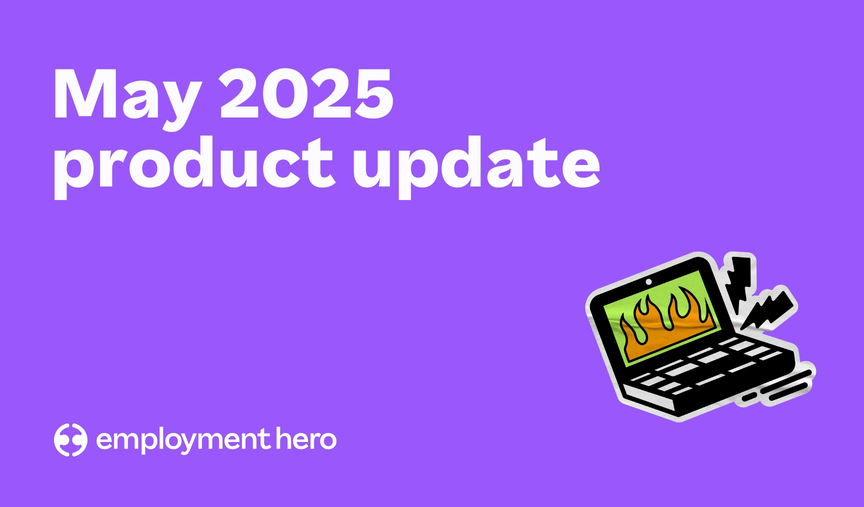7 ways to help and support pregnant employees
Keen to create a pregnancy-friendly workplace culture? Here are seven practical ways you can do so.

Pregnancy is always such exciting news to celebrate — but it can be daunting, especially for first-time moms or women experiencing pregnancy complications. Having an inclusive workplace that fully supports pregnant employees definitely helps to ease the worries and stress they face.
Employers play an incredibly important role in creating a conducive environment for women to work in, with HR policies and structures in place to ensure that women continue to retain their roles, and that their talent and skills are being valued in both the industry and organisation. This is especially important with the female employment rate in Singapore reaching a high of 75% in 2021, compared to 53% in 1994.
There’s no one-size-fits-all approach to this, but if you’re keen to find out how you can better support an employee’s pregnancy, here are 7 ways you can help during and after.
1. Make sure policies and benefits are straightforward and easily accessible
For a variety of reasons such as miscarriages, most women don’t feel comfortable announcing their pregnancy until the later stages. It’s important that they can easily access the company’s policies regarding maternity leave and other benefits once they are aware of the news that they are expecting.
Make sure company policies clearly state the protections and obligations of both the employer and employee with regards to maternity leave, so that both parties are aware of the relevant legislations. Creating a page with a brief list of instructions would also take some stress off their shoulders, especially if they are completely new to the whole pregnant-but-employed-so-what-do-I-do journey.
Having a digital copy stored on a HR platform provides fuss-free convenience as a source of truth, for all pregnant employees to access anytime and anywhere.
2. Set up a communication and support network

Ensure that contact information for the HR department is readily available should pregnant employees feel the need to reach out for help, and be prepared to answer any questions or address any concerns they may have.
Parent support groups and resources
If you’re able to offer further support to pregnant employees beyond legal and contractual obligations, they’ll certainly appreciate and remember it! Create a parent support group within the organisation so that they can lean on each other and other working parents.
From sharing pregnancy tips to advice on what baby stuff to buy and hilarious things kids say, it’ll assuage their fears knowing there’s a thriving community going through the same situation. Creating a Slack channel to share helpful resources on things like maternity insurance, webinars, and events for new mothers is another great way to offer support.
Discuss what your pregnant employee wants and needs
Going on maternity leave can feel lonely, and you don’t want employees feeling disconnected from the workplace. It would be beneficial to have discussions about their plans ahead, and how involved they would like to be with the business while away.
Important business updates and changes will likely take priority, especially if it would affect their role. Some new moms prefer to disconnect and take a step back from being involved, while others will be keen to stay on track with what’s happening within the company.
It all depends on the individual, and finding out what they want before they leave for maternity leave is crucial. Ensure that they will receive weekly or monthly updates — via a team member, emails, or regular zoom meetings to stay in touch and keep track of their wellbeing.
3. Discuss flexible/remote work arrangements

Covid-19 has fundamentally changed how we work — with companies implementing hybrid work arrangements, or adopting a remote working culture. The future of work is flexible, with jobs previously done in the office suitable to be done anywhere in the world, and that is one of the best things employers can capitalise on to make the workplace more pregnancy-friendly.
Every woman is different in terms of pregnancy needs — some might experience terrible morning sickness, nausea, fatigue, and so on, on top of having to attend regular check-ups or follow specific instructions by the doctor to ensure a healthy pregnancy.
Although most women continue to work until one month before their due date, having to commute to the office daily may not be easy for them at the later stages of pregnancy. It could leave them vulnerable to risks of precarious situations, which do not bode well for the pregnancy. Prenatal care also requires lots of regular doctor visits, which can be tiring to schedule only outside office hours.
As a supportive employer, consider incorporating flexible work arrangements and accommodating any changes that might arise during their pregnancy term. This allows them to be more comfortable while working from home, and enables them to better focus on their tasks. Trust that your pregnant employee is productive even with remote working, and focus on output over hours.
4. Be mindful of pregnancy discrimination
Pregnancy discrimination is unfortunately common in the workplace. Women are treated unfavourably on the basis of pregnancy, potential pregnancy, childbirth or pregnancy-related conditions.
It includes the following actions, and as an employer, it’s important you make sure none of these happen in the workplace:
- Refusing to hire a pregnant applicant
- Subjecting her to demotion or unfavourable transfer
- Denying the same, or a similar, job to a pregnant employee when she returns from maternity leave
- Dismissing an employee during pregnancy or upon return from maternity leave without justifiable causes
- Offering her a smaller pay raise or bonus, or fewer training opportunities, than other employees despite consistent positive performance reviews or feedback
- Making offensive, insulting and/or harassing comments over pregnancy, a pregnant employee’s body and/or breastfeeding activities
- Implementing changes in her working hours, roles, duties and performance targets without justifiable causes
In Singapore, 70% of the workplace discrimination cases seen by AWARE’s Workplace Harassment and Discrimination Advisory (WHDA) since its launch in September 2019 relate to pregnancy discrimination. Despite protections in legislative law, problematic stereotypes still persist.
The WHDA has received cases of employers trying to get pregnant employees to leave the company, in anticipation of them going on maternity leave, or becoming poor performers once they have a child. They’ve also received cases where employees have been told that their job no longer exists while they were on maternity leave, or when they returned from it.
Pregnancy discrimination can also sometimes be seen in more subtle ways. Mothers are seen in a different light — bosses assume they are less committed and saddled with family responsibilities, which lead them to feel less valued by the organisation. Supervisors also respond negatively when mothers have to take urgent leave due to unforeseen child emergencies. There’s no wrongful dismissal or grounds for action against employers in these scenarios — but such toxic work environments often result in moms leaving the workforce.
5. Ease transition into the workplace after maternity leave

It is mandatory for employers to provide Singapore citizens with 16 weeks of Government-Paid Maternity Leave or 12 weeks of unpaid maternity leave, depending on the criteria fulfilled. Foreign employees are also entitled to 12 weeks of maternity leave (if they have worked for at least 3 consecutive months before the birth of the child), in accordance with the Employment Act.
Readjusting back to work isn’t easy, which is why it’s imperative for employers to help employees with the transition. With completely new routines, physical changes to grapple with, and the lack of sleep — women struggle to balance both childcare and working full-time again. After all, raising a newborn is exhausting and physically demanding.
Maintaining flexible work arrangements
If a pregnant employee enjoyed flexible work arrangements while pregnant, such arrangements should continue even after they return from maternity leave. The shift towards flexible work arrangements is also fully supported by the Singapore government, with 25 action plans laid out in the White Paper on Women’s Development.
Additional leave days
Whilst employees are entitled to maternity leave benefits, consider creating a family-friendly work environment by adding more leave days on top of the existing maternity leave days. These extra leave days can come in handy when new parents need to attend to unexpected situations or doctor visits.
6. Have a plan in place for pregnant women who’ve been through trauma
Not every pregnancy journey is a smooth-sailing one.
Women who have gone through a traumatic labour or miscarriage will require additional support and time to grieve and recuperate. They may need extra time off to attend medical appointments and therapy sessions — which is why extra effort is needed to be as flexible as possible regarding the employee’s workload.
Consider implementing an Employee Assistance Program (EAP)
There are also plenty of mental health conditions that come with bearing children, such as postpartum depression and anxiety, and most of them go untreated. Workplace wellness is key to an employee’s experience, and an Employee Assistance Program allows them to access 24/7 support over the phone, face-to-face, or online.
Employees will be able to access free sessions with trained counsellors and have confidential conversations with them, which will be an extremely helpful resource for those who have gone through or are going through difficult times.
7. Set up designated nursing rooms
A vast majority of workplaces are unfriendly to nursing mothers, with many having to resort to pumping in the bathrooms — in less than ideal conditions. Some moms have even resorted to pumping in meeting rooms, with the added stress of knowing that anyone might want to use the room at any time!
In the early days of motherhood, this can be very isolating and stigmatising. Having a clean, private room where women can pump at work would make a huge difference. It’s convenient and reduces stress on new mothers, as they need to schedule times to express breast milk throughout the work day, on top of their existing work schedule.
Breastfeeding is hard, and a huge commitment — it’s different for every mom and her baby. Not to mention it can be very painful as well, causing engorgement and mastitis. It brings about emotional fluctuations at a time when postpartum emotions are running high, and milk production ebbs and flows so it can be very stressful.
Being a supportive employer to breastfeeding mothers actually translates to cost savings for health care, reduced sick days to care for sick children, and improved employee productivity and retention. The benefits of breastfeeding are well-documented, and when moms feel supported, healthy, and comfortable in the office, they will excel better at work.
Companies can capitalise on the NTUC U Women and Family’s ‘Better Workplace for Women’ campaign, to incorporate a wellness corner or lactation space in their premises.
Normalise breastfeeding
Breastfeeding moms might worry about being viewed as troublesome or unproductive at work as compared to their colleagues — advocate a comfortable workplace culture for her to breastfeed in. Remind her to take regular breaks, and show commitment in making an effort to understand the challenges she faces at the workplace.
Consider introducing a policy statement to assure moms that they can combine work and breastfeeding — providing them with a stronger sense of job security and confidence in the workplace.
More effort is also needed to educate other team members in the workplace on breastfeeding, as mothers tend to struggle with supervisors or co-workers who do not understand the need to express milk. Social support helps to reduce parental stress!
Learn more practical ways to support working parents

If you’ve got an employee who’s expecting soon, check out our guide to understanding parental leave, and find out how you can better support working parents after the child is born.
Balancing work and parenting responsibilities isn’t easy at all, and there are plenty of things that business and HR leaders can do to help. There are so many positive effects to celebrating and supporting working parents — you improve your company’s appeal as a potential employer, you decrease the risk of employee turnover, and you create a great company culture for all.
Most of all, you become a valuable agent for change, influencing other businesses and leaders to create a better world for working parents. Remember, the happiest workforce is one where each person feels like they belong.
Related Resources
-
 Read more: Product Update: June 2025
Read more: Product Update: June 2025Product Update: June 2025
Follow our June 2025 product update as we share all of the latest and greatest features we’ve released over the…
-
 Read more: Product Update: May 2025
Read more: Product Update: May 2025Product Update: May 2025
Follow our May 2025 product update as we share all of the latest and greatest features we’ve released over the…
-
 Read more: Product Update: April 2025
Read more: Product Update: April 2025Product Update: April 2025
Follow our April 2025 product update as we share all of the latest and greatest features we’ve released over the…









